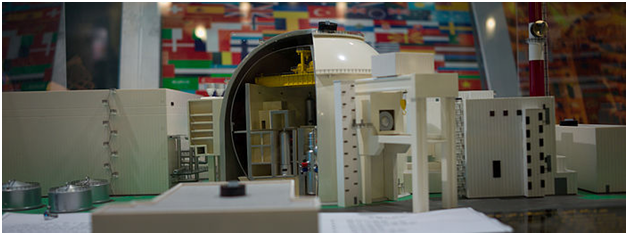Today, I am continuing with nuclear matters in the Middle East. Recently I have been blogging about Iran. This blog is going to discuss Iran's nuclear program. The U.S. began helping Iran with nuclear research from the 1950s. Iran established the Tehran Nuclear Research Center which was run by the Atomic Energy Organization of Iran. In 1967, the U.S. provided Iran with a research reactor. In 1968, Iran signed the Nuclear Non-Proliferation treaty which included inspections by the International Atomic Energy Agency (IAEA). The Shah of Iran was very interested in nuclear power because he knew that the oil under Iran would run out some day.
Construction of the Bashehr I nuclear plant was started with German assistance in 1975 at a site near the city of Bashehr on the Iranian Persian Gulf coast. In addition, uranium processing facilities were built with the assistance of foreign companies and governments and deals were signed for uranium supplies. The Shah created a secret program to develop nuclear weapons. U.S. assistance stopped when the Iranians overthrew the Shah's government in 1979. International assistance in uranium enrichment was halted and as was work on the Bashehr reactors.
The Iranian secret nuclear weapons program was disbanded by the Ayatollah Khomeini when he took power after the revolution. He said that Muslim ethics and jurisprudence did not allow for the creation and use of nuclear weapons. Iran has signed international treaties that outlaw the use of weapons of mass destruction including nuclear weapons. Research and development on the use of nuclear energy to generate power continued under Khomeni. By 1988, the Iranians had opened ten uranium mines inside of Iran.
Around 1990, the Russians formed Perspolis, a joint research organization, with the Iranians. Despite intense international pressure the Russians continued to help the Iran with nuclear research and development through the 1990s. A Russian contractor was retained in 1995 to resume work on the Bashehr I power plant. Problems with cost overruns, technical issues and international pressure interfered with the completion of the plant. Finally, in 2010, nuclear fuel was delivered to the reactor and the plant began generating electricity in 2011 for the Iranian power grid.
The IAEA conducted inspections during the 1990s and found that the Iranians were in compliance. Their research and development they were conducting was aimed at the peaceful development of nuclear energy for electricity. Despite IAEA reassurances, the U.S. and its major allies continued to fear an Iranian nuclear weapons program.
In 2002, Iranian dissidents claimed that Iran was working on an underground uranium enrichment facility and a heavy water reactor called Arak. The IAEA demanded access to these sites so it could carry out inspections. Through the first decade of the Twenty First century, There were a number of diplomatic initiatives launched by major industrial nations as well as Iran itself that sought to create frameworks that would allow the Iranians to continue working on nuclear power generation while reassuring the foreign powers that Iran would not develop nuclear weapons. During this period, Iran broke many agreements with the IAEA for full access to nuclear sites in Iran or failed to abide by agreements to halt uranium enrichment. Trade sanctions were initially imposed by the U.N. in 2006 to interfere with Iran's nuclear program. Subsequently, harsher trade sanctions were imposed on a wide array of products including consumer goods. In spite of these efforts, the IAEA cannot be sure that Iran is not working on nuclear weapons development.
Once again, in 2013, there are negotiations underway to get Iran to stop enriching uranium and to get them to stop construction of a heavy water reactor that might be used to produce plutonium for nuclear weapons . Russia and Iran recently announced a project to build a second nuclear power reactor in Iran. As I have reported before, Israel is very concerned that Iran will have nuclear weapons unless military action is taken soon. Saudi Arabia might also obtain nuclear weapons if Iran is known to have them. I am afraid that the situation in the Middle East is very unstable at the moment with respect to nuclear weapons.
Bashehr nuclear reactor model:
